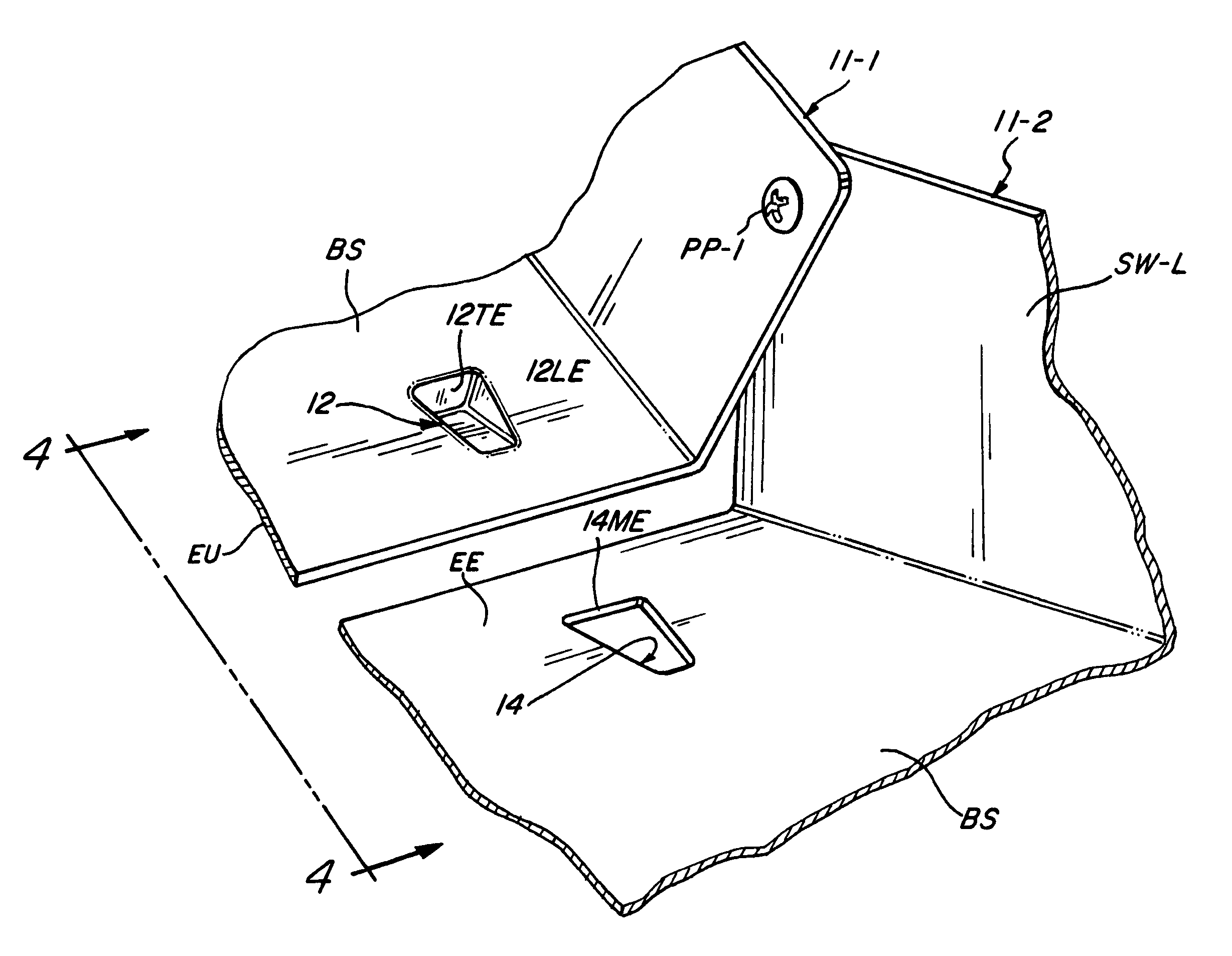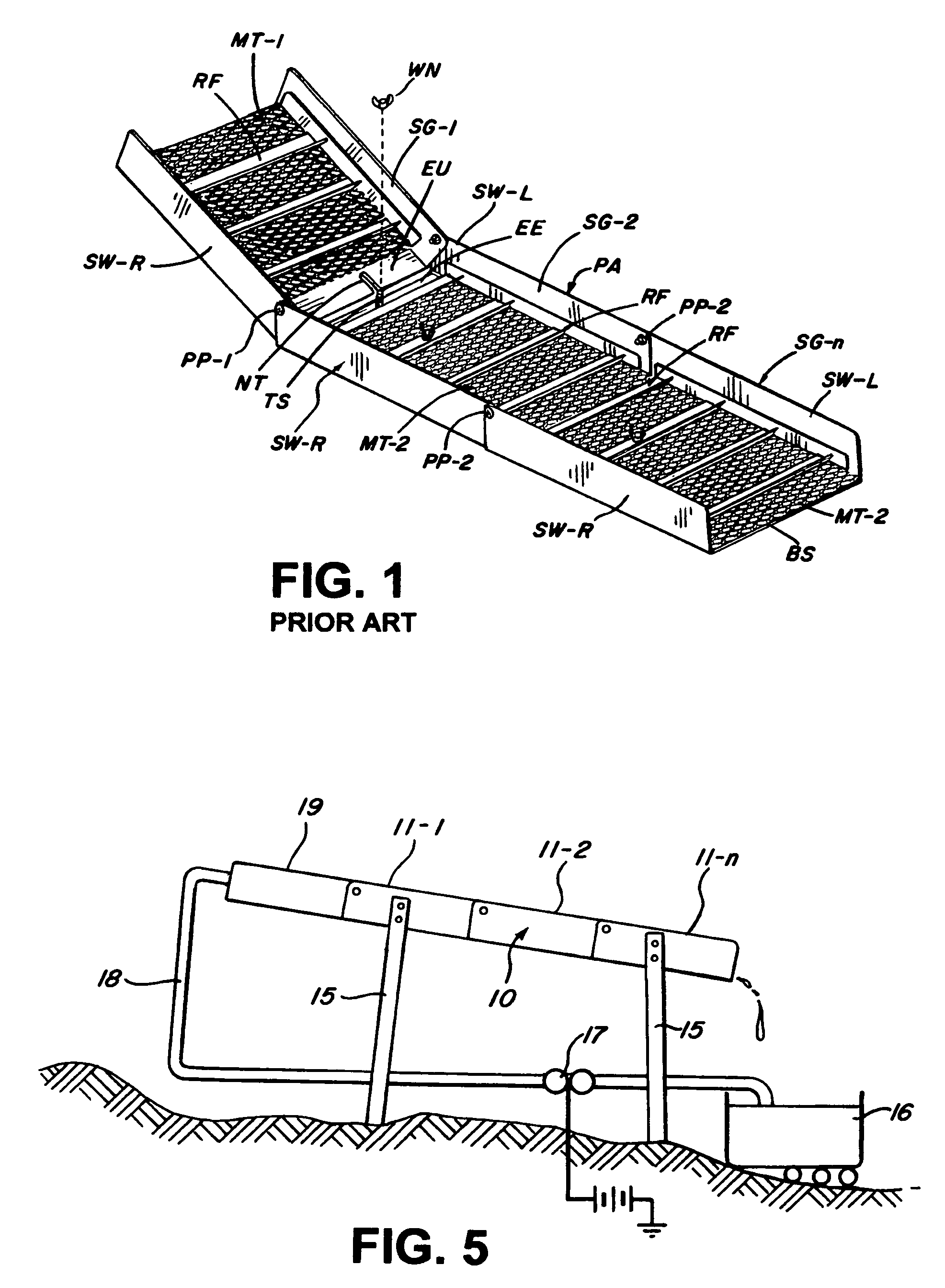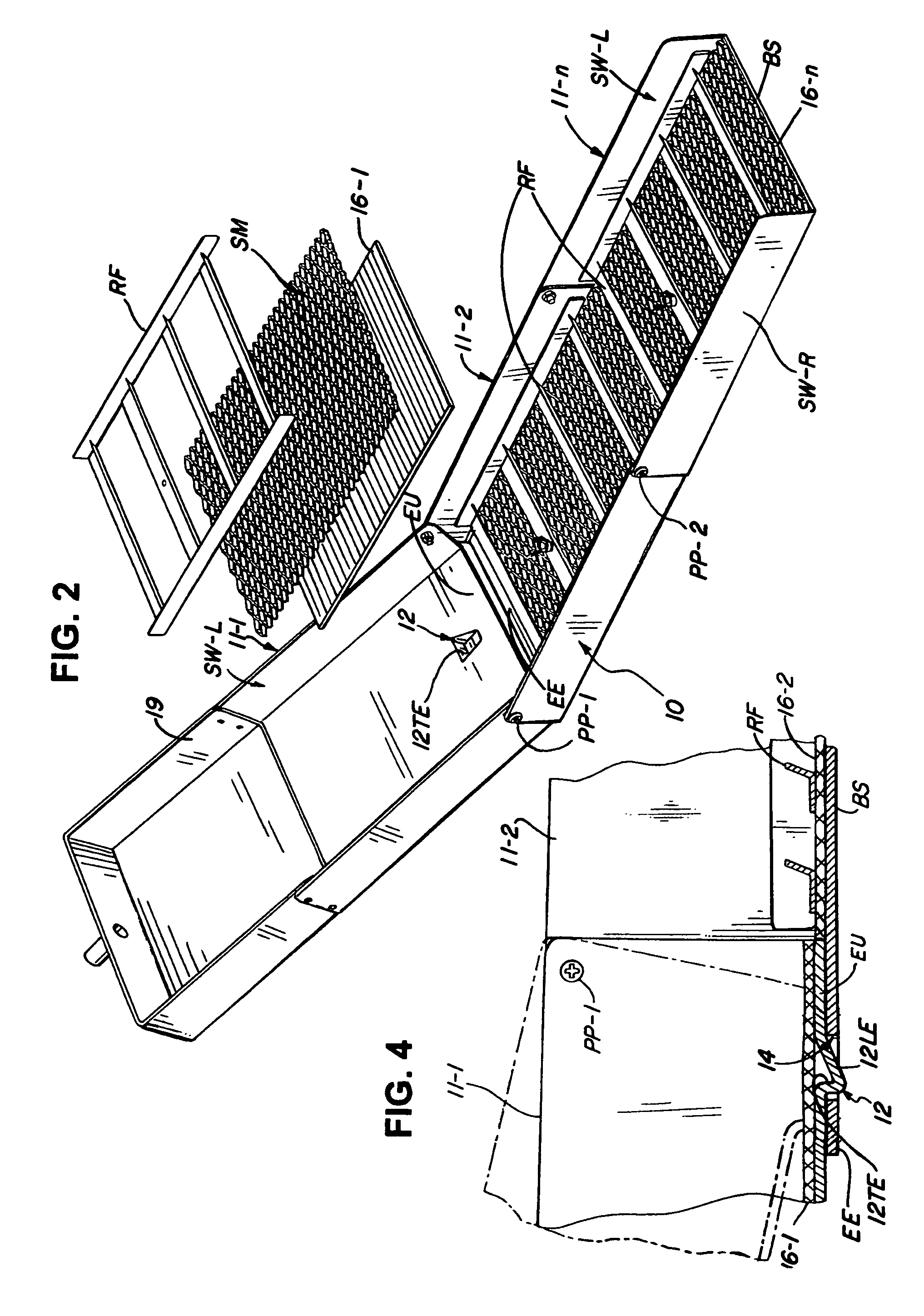Collapsible sluice box
a sluice box and hinge technology, applied in the direction of magnetic separation, gas current separation, chemistry apparatus and processes, etc., can solve the problems of reducing the area for capture, affecting the efficiency of sluice box operation, etc., to achieve the effect of limiting leakage, minimizing leakage of any water flow, and maximizing the area for captur
- Summary
- Abstract
- Description
- Claims
- Application Information
AI Technical Summary
Benefits of technology
Problems solved by technology
Method used
Image
Examples
Embodiment Construction
[0021]As shown in FIG. 1 the typical prior art implementation of a collapsible sluice box assembly PA, as exemplified by the structure sold by JOBE Wholesale under their model number 6506, is generally defined by a set of nested U-sectioned sheet metal segments SG-1, SG-2 through SG-n each including a rectangular bottom surface BS bounded on both its longitudinal edges by a corresponding vertically aligned left and right sidewall SW-L and SW-R. In order to accommodate a nested receipt of one of the segments in the next adjacent one they are each incrementally larger by at least the thickness of the sheet metal stock with one end of the side walls SW-R and SW-L of the first segment SG-1 pinned by pivot pins PP-1 to the correspondingly overlapping edges of the next segment SG-2, with segment SG-2 then pinned by pivot pins PP-2 to the next segment, and so on.
[0022]In each instance the pivot axes of pins PP-1, PP-2 through PP-n are separated from the corresponding bottom surfaces BS by ...
PUM
 Login to View More
Login to View More Abstract
Description
Claims
Application Information
 Login to View More
Login to View More - R&D
- Intellectual Property
- Life Sciences
- Materials
- Tech Scout
- Unparalleled Data Quality
- Higher Quality Content
- 60% Fewer Hallucinations
Browse by: Latest US Patents, China's latest patents, Technical Efficacy Thesaurus, Application Domain, Technology Topic, Popular Technical Reports.
© 2025 PatSnap. All rights reserved.Legal|Privacy policy|Modern Slavery Act Transparency Statement|Sitemap|About US| Contact US: help@patsnap.com



